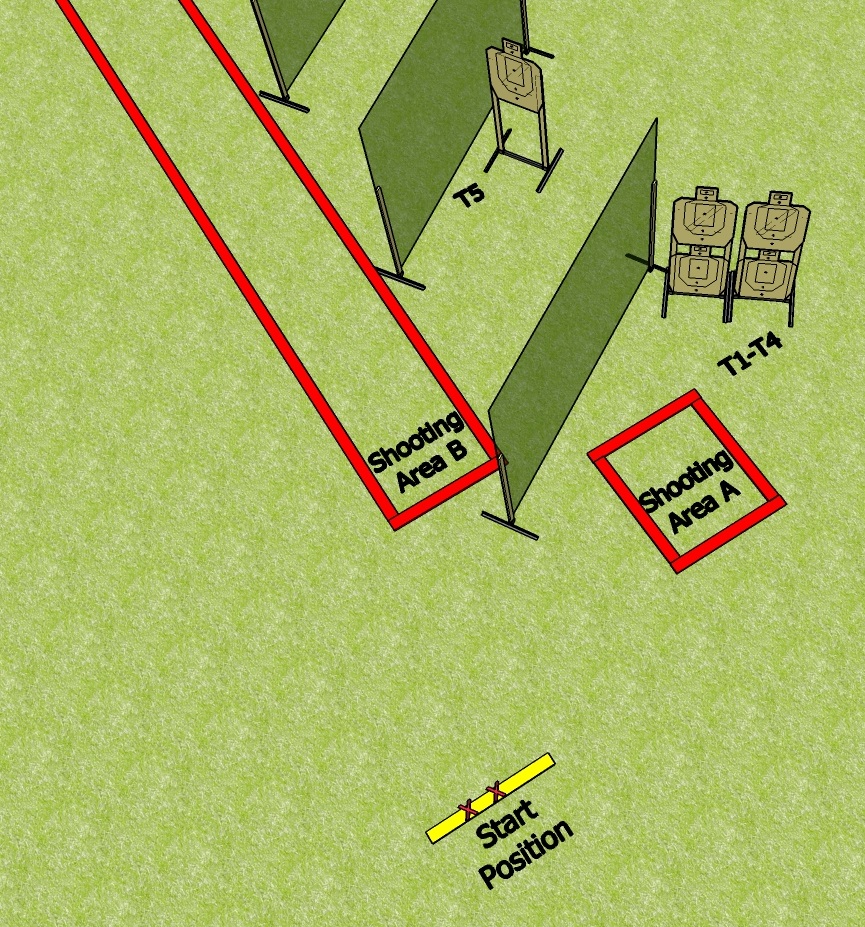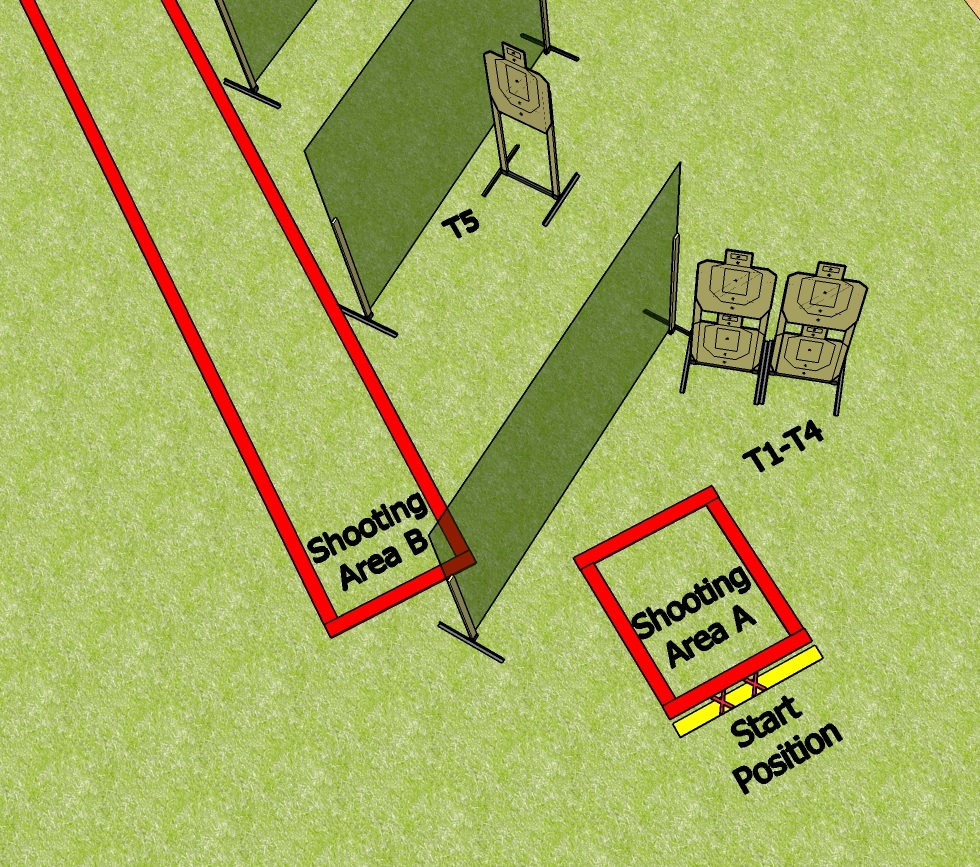We have many penalties in our sport and most of them are well defined, but there are a few times where the RO needs to determine the number of penalties based on significant advantage. For the September Question of the Month we posed a question where significant advantage may come into play: After the start signal, the competitor draws and shoots T1-T5 from the start position and then enters shooting area B and shoots the remaining targets. How many procedural penalties?

This question had a variety of answers to choose from, but ultimately the winner was ten procedurals with 57% of the votes.
The correct answer is indeed ten procedurals, so let’s talk about why that is. This is all covered under rule 10.2.1 which covers foot faults, but we need to look at sub-rule 10.2.1.3 first: “If a competitor starts and fires shots while completely outside a shooting area, foot fault penalties will apply as above, as stated in 10.2.1 and/or 10.2.1.1.” This rule was specifically added to address stages where the competitor starts outside the shooting area and doesn’t enter the shooting area at all before they start shooting. 10.2.1.3 points to two other rules for the specific number of penalties. When we look at 10.2.1 it states that competitors will be assessed one procedural penalty per occurrence when they fire shots while faulting while 10.2.1.1 states that penalties will be per shot if significant advantage occurred.
The poll results indicate that a majority of the respondents thought that there was a significant advantage and applied ten procedurals, one per shot. If there was no significant advantage, it would have only been a single penalty for a single occurrence (see the definition of occurrence in the rulebook glossary, App. A3). But exactly what is significant advantage, and why does it come into play here? There is a definition of significant advantage, with examples, in App. A3 of the rulebook. In short, if the competitor gains an advantage such as a better view of targets or a more stable shooting position while faulting, that is significant advantage.
In this situation, by engaging targets from the start position, the competitor saved significant time by not having to first move to shooting area A and then move to shooting area B to engage the first five targets. Which means this is a per shot penalty due to significant advantage. If the competitor had only fired nine shots at those five targets, then it would be nine penalties. If the competitor had fired twelve shots at those five targets, it still would only be ten penalties because of 10.2.3. The penalties for faulting can’t exceed the maximum number of scoring hits, which is ten in this case. And remember that 10.2.3 only limits the number of penalties for faulting under 10.2.1 and failing to comply with the stage procedure under 10.2.2 and not other penalties.
What is an example of a per occurrence penalty under 10.2.1.3? The picture below, is the same stage, but the start position has been moved to right outside shooting area A. If a competitor failed to enter shooting area A before engaging the first four targets, it would be a single procedural. That is because there is no significant advantage, because that one step forward really doesn’t change much in regard to target view, and it is a single occurrence of faulting.

So why did some folks select an answer other than one or ten procedurals? It is because people think that foot fault penalties apply per target or that you can give a per occurrence penalty for some targets and a per shot for other targets, but that is not what the rules say. It is either a single penalty per foot fault occurrence, or per shot due to significant advantage.
When in doubt about whether it is significant advantage or not, always confer with the RM for the match to ensure that the penalties are applied consistently. At major matches, stage crews should discuss possible situations where significant advantage might occur and discuss them with the RM before the match starts. But usually major matches are not the problem. In reality, we often see this penalty misapplied at local matches where ROs are embedded with the squads and the RM is never consulted. Some squads give per shot penalties while others assess penalties per occurrence. In most cases it is fairly cut and dry if there was a significant advantage or not, but if there is any uncertainty, ask the RM. And if the RM sees a stage where there might be some confusion at a local match, bring it up to the ROs before the match starts.
Make sure to cast your vote for the answer to the current Question of the Month on the blog homepage.